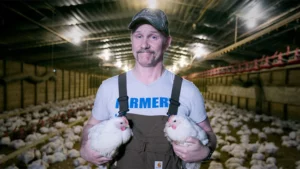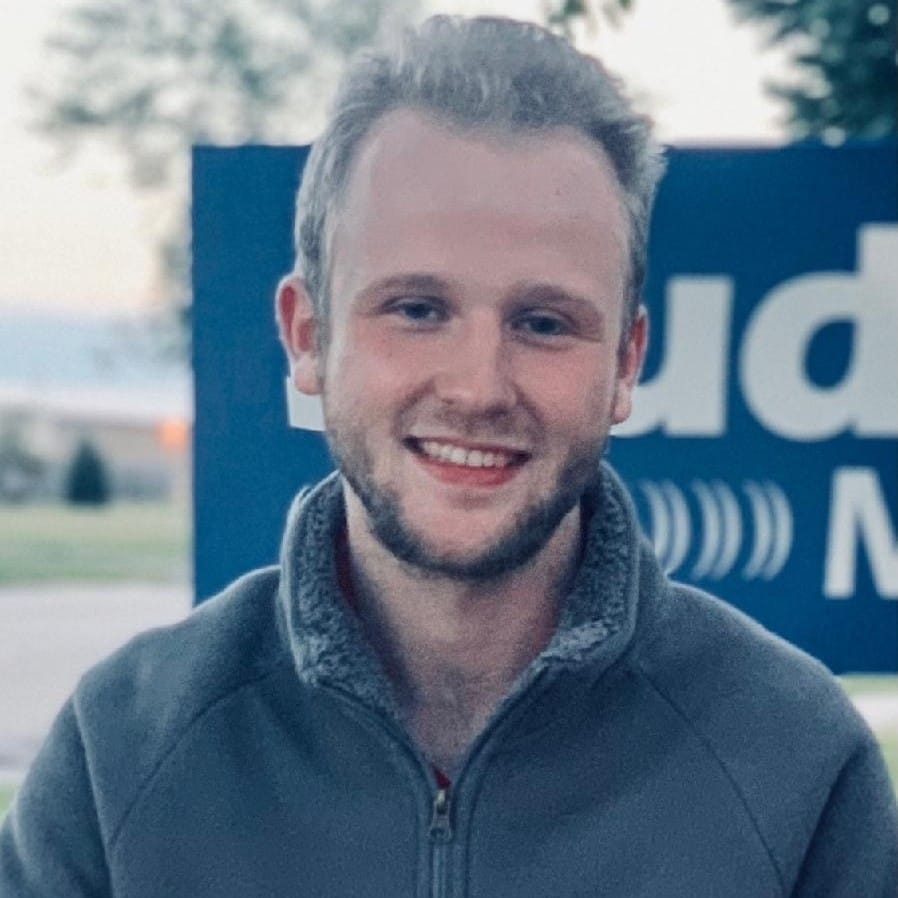Publication Date: 05-24-2024
Super Size Me 2: Holy Chicken! (2019) review
Dir. Morgan Spurlock
By: Steve Pulaski
Rating: ★★★
🕯️ Remembering Morgan Spurlock 🕯️
🕯️ 1970 – 2024 🕯️
“If you enjoy it, the chicken didn’t die in vein!” – “Cluckin’ Bell” radio spot, Grand Theft Auto: San Andreas
Despite sitting on the shelf for two years, Super Size Me 2: Holy Chicken! has timing on its side in lieu of the wickedly popular and extraordinarily successful Popeye’s chicken sandwich, which was so successful it sold out nationally in just a matter of weeks. Upon being acquired from the Toronto Film Festival in 2017 by YouTube and slated for distribution via YouTube Red, Spurlock penned a blog confessing everything from rampant adultery, unsavory behavior towards his past and present female colleagues, and even alcoholism. In a matter of days, YouTube dropped plans to release the film, leaving the documentary in limbo, but more importantly, affecting the chicken farmers who risked their companies and public image by appearing in a film that attacks the poultry industry.
As is the case with so much in the age of the daily outrage machine, the controversy surrounding Spurlock came to pass, despite leaving his public image tarnished and his company, Warrior Poets, defunct. But Super Size Me 2 and its thesis are still timely, not only due to the aforementioned Popeye’s sandwich, but because fast food’s half-hearted quest to repair its image by simply doing just that rather than focus on food quality is in full swing. Rather than gorge himself on nothing but fast food for the course of a month, Spurlock takes a different approach by zeroing in on the chicken industry, which, like anything else that’s oh-so American, is consolidated by a handful of big players. More on that in a bit.
In recent years, chicken has risen to become the most popular meat in America, when it was only a fraction of diets back in the “glory days” of beef. Stats say Chick-fil-A has become the third largest restaurant chain in the country in terms of sales, surpassing old hats like Burger King and Taco Bell, both of which are significantly larger. Spurlock sets out to open his own fast food restaurant and eventually decides it’ll be a chicken joint; one that will emphasize honesty about its practices through its branding. We follow him as he scours the heartlands for a reasonable chicken farm, opens his own, coyly named “Morganic Farms,” and talks with branding and culinary experts on how to prepare and solicit a quality chicken sandwich. The restaurant becomes “Holy Chicken,” a play on Chick-fil-A’s widely known Christian CEO and his opposition to gay and lesbian causes.

When acquiring the land and resources necessary to open a chicken farm, Spurlock’s research leads him to discover that the cutesy words used to sell chicken that is apparently better for you is exactly what it is: marketing. He addresses labels like “cage-free,” “hormone-free,” and “free-range chickens,” focusing on how, as a chicken farmer, it is easy to earn the FDA stamp of approval on the use of the terms by taking just a few simple, insidious extra steps. He allows the chickens to exit the enclosed farm by putting up a small cage around one exit fit for maybe a small group of people. There’s your “free-range chickens.” The breed of chicken he’s raising are known as “broiler chickens,” ones bred to grow fat and fast, sometimes at the expense of their health, leaving them susceptible to cardiac arrest. The extensive use of broiler chickens has led to the rise in “hormone-free” labels popping up on supermarket chicken. Not only is it illegal to use hormones on this broiler chickens, it’s also unequivocally pointless given how quickly they already grow.
Tyson Foods, Pilgrim’s Pride, Sanderson Farms, Perdue, and Koch Foods control about 99% of the American poultry industry, from chickens to their feed. Spurlock dubs this quintet “Big Chicken,” quite fittingly, and spends considerable time detailing allegations against the corporations (namely Tyson) from chicken farmers who claim they severely handicap farmers from getting too big or ones who dare go against the godfathers of the industry. Big Chicken, too, employs what is known as “tournament pricing,” which pits chicken farmers against one another in the process, thus creating a food chain that survives by essentially eating itself and the ground made by others.
Shown in great details is how greatly fast food restaurants have rebranded on all fronts since the release of Spurlock’s breakout documentary 15 years ago (12 at the time of filming). McDonald’s architecture has ditched the golden arches in favor of manicured brick and artfully welded steel, while interiors of Wendy’s are complete with electronic fireplaces and wood-grain finish, topped off with large buzzwords of varying fonts and sizes plastered all over their walls. When was the last time you intently read anything on a fast food wall? It’s quite a fun exercise. You hear about their “QUALITY FOOD” and how their salads are “MADE FRESH DAILY.” Seeing Spurlock and two other branding experts break down McDonald’s artisan chicken sandwiches (since discontinued in much of the country) and other fast food restaurant’s attempts to disguise salt and sugar-heavy food as anything but is a real howler.
It’s fascinating watching Spurlock build a fast food restaurant from the ground up, consulting chicken farmers, marketing strategists, and brand experts, all while using the same laidback style of documentary filmmaking he’s used since the original Super Size Me, not to mention subsequent documentaries ala Where in the World is Osama Bin Laden? Much of it isn’t groundbreaking information, given the litany of contemporary criticism of the fast food industry, much of it kickstarted thanks to Spurlock’s breakout film 15 years ago. I do feel that the examination of not only the poultry industry but the new wave of fast food branding is somewhat necessary. When was the last time you consciously read the literal writing on the wall?
NOTE: As of this writing, Super Size Me 2: Holy Chicken! is available to watch on YouTube, free of charge.
NOTE II: My reaction to the death of documentarian Morgan Spurlock and the complicated yet colorful legacy he leaves behind, from my podcast, Sleepless with Steve:
Directed by: Morgan Spurlock.
About Steve Pulaski
Steve Pulaski has been reviewing movies since 2009 for a barrage of different outlets. He graduated North Central College in 2018 and currently works as an on-air radio personality. He also hosts a weekly movie podcast called "Sleepless with Steve," dedicated to film and the film industry, on his YouTube channel. In addition to writing, he's a die-hard Chicago Bears fan and has two cats, appropriately named Siskel and Ebert!


